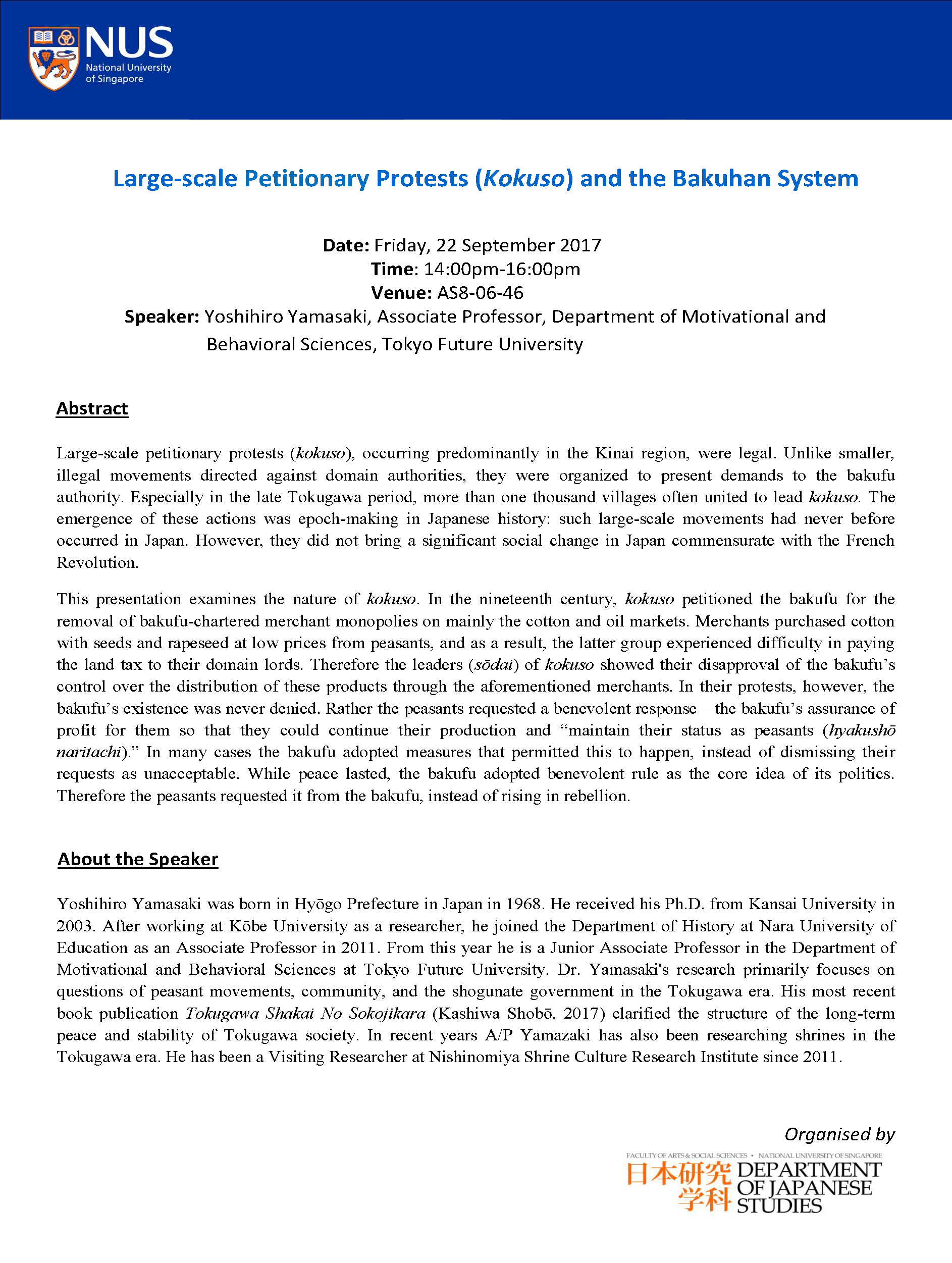Large-scale Petitionary Protests (Kokuso) and the Bakuhan System
Abstract
Large-scale petitionary protests (kokuso), occurring predominantly in the Kinai region, were legal. Unlike smaller, illegal movements directed against domain authorities, they were organized to present demands to the bakufu authority. Especially in the late Tokugawa period, more than one thousand villages often united to lead kokuso. The emergence of these actions was epoch-making in Japanese history: such large-scale movements had never before occurred in Japan. However, they did not bring a significant social change in Japan commensurate with the French Revolution.
This presentation examines the nature of kokuso. In the nineteenth century, kokuso petitioned the bakufu for the removal of bakufu-chartered merchant monopolies on mainly the cotton and oil markets. Merchants purchased cotton with seeds and rapeseed at low prices from peasants, and as a result, the latter group experienced difficulty in paying the land tax to their domain lords. Therefore the leaders (sōdai) of kokuso showed their disapproval of the bakufu’s control over the distribution of these products through the aforementioned merchants. In their protests, however, the bakufu’s existence was never denied. Rather the peasants requested a benevolent response—the bakufu’s assurance of profit for them so that they could continue their production and “maintain their status as peasants (hyakushō naritachi).” In many cases the bakufu adopted measures that permitted this to happen, instead of dismissing their requests as unacceptable. While peace lasted, the bakufu adopted benevolent rule as the core idea of its politics. Therefore the peasants requested it from the bakufu, instead of rising in rebellion.
About the Speaker
Yoshihiro Yamasaki was born in Hyōgo Prefecture in Japan in 1968. He received his Ph.D. from Kansai University in 2003. After working at Kōbe University as a researcher, he joined the Department of History at Nara University of Education as an Associate Professor in 2011. From this year he is a Junior Associate Professor in the Department of Motivational and Behavioral Sciences at Tokyo Future University. Dr. Yamasaki's research primarily focuses on questions of peasant movements, community, and the shogunate government in the Tokugawa era. His most recent book publication Tokugawa Shakai No Sokojikara (Kashiwa Shobō, 2017) clarified the structure of the long-term peace and stability of Tokugawa society. In recent years A/P Yamazaki has also been researching shrines in the Tokugawa era. He has been a Visiting Researcher at Nishinomiya Shrine Culture Research Institute since 2011.


